"All in the Family" Went Through Two Title Changes

If you’ve ever listened to the sitcom’s notorious theme song, then you might understand why the original title of this series was intended to be "Those Were the Days". However, this title didn’t stick—and neither did Norman Lear’s initial title "And Justice For All". Looks like third time's a charm!
The show's theme song "Those Were The Days" was written by Lee Adams (lyrics) and Charles Strouse (music). Carroll O'Connor and Jean Stapleton played and sang the song at a piano at the start of every episode. The live audience applause was included in the episode.
Archie Bunker Was Inspired by Norman Lear’s Father
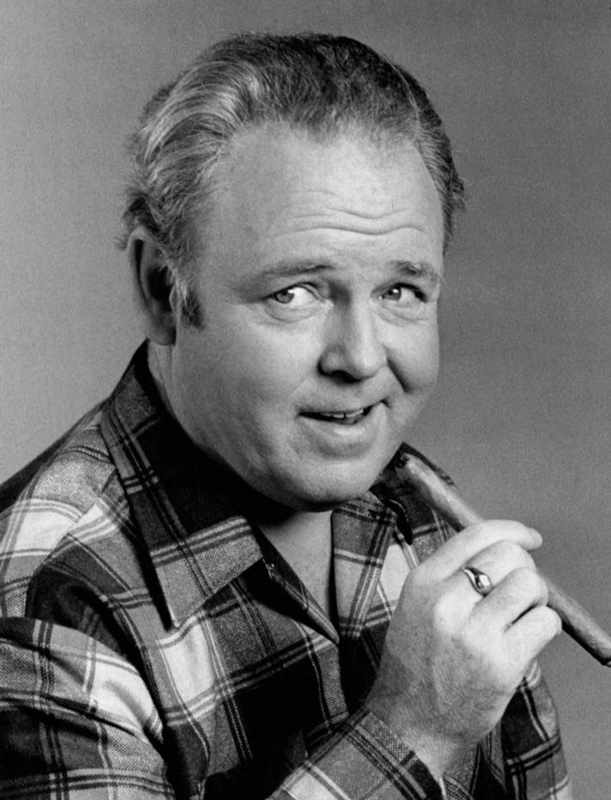
Norman Lear, the creator and writer of All in the Family, found inspiration in his past. Herman Lear, Norman’s father, became the muse for Archie Bunker. Through reflection on his own life and relationships, Lear crafted the overly boisterous and extremely humorous character.
Archie Bunker was ultimately a complicated character. The bigoted blue-collar is often depicted as an ultimately decent and loving man. As a WWII veteran, Archie Bunker struggles to adapt to the changes going on in the world. While the show wouldn't fly today, the character would really change television history.
Archie Bunker and Carroll O’Connor Had Differing Views
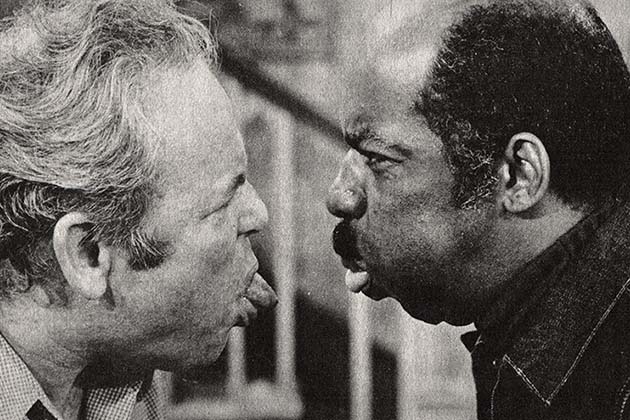
When an actor is so genuine, it can be easy to mistake their character’s personality traits and characteristics for their own. In reality, Carroll O’Connor had very different political views than his character Archie Bunker. He was born in the Bronx, raised as a liberal, and certainly valued his education.
He was definitely not the conservative and prejudice character that he embodied. It's important to remember that the things that happen in a television show are fictional. The people are not real and the actors that play them are usually nothing like the character, no matter how convincing they may be.
Jean Stapleton Could Actually Sing

The theme song for All in the Family was cringe-worthy—and mostly because Jean Stapleton’s singing voice was anything but angelic. But, most people don’t know that her tone-deaf trills were part of her act. She was actually an accomplished singer who was trained in musical theatre.
This is just another fact that goes to show how different the characters and actors can be. Of course, if Jean Stapelton had actually sung the song to the best of her ability, it wouldn't quite had the same vibe.
Norman Lear Wanted to Cast Mickey Rooney as Archie Bunker
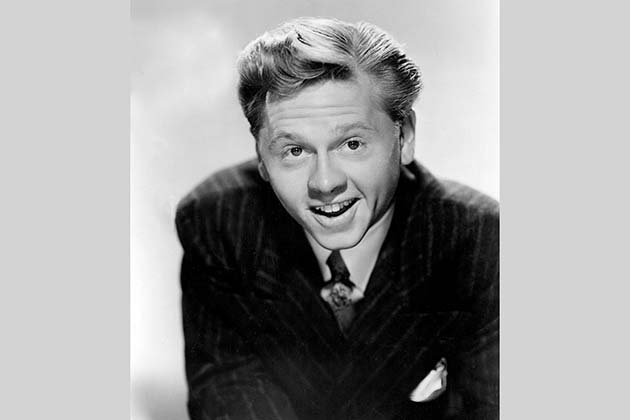
Before Carroll O’Connor was cast for the role of Archie Bunker, Norman Lear had another actor in mind. He wanted Mickey Rooney to portray the leading man—but when Lear called and described Archie Bunker to Rooney, he replied, “Norm, they’re gonna kill you. They’re gonna shoot you dead in the streets.”
Clearly, he was opposed to the controversial character. Mickey Rooney was an accomplished stage and screen actor, as well as a comedian and radio entertainer. He had a number of successful television roles and performed on Broadway. Mickey Rooney was married eight times with six of them ending in divorce.
Jean Stapleton Requested Her On-Screen Death
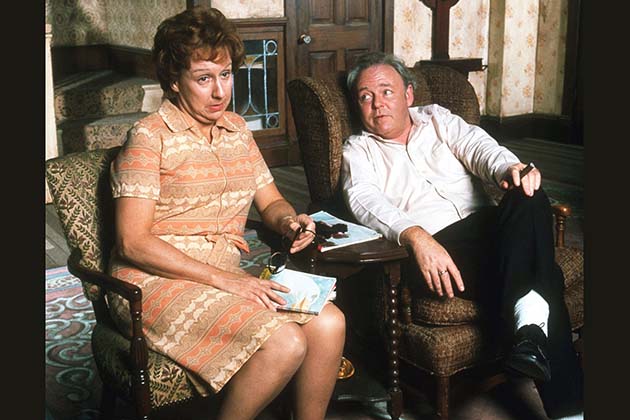
As strange as it may sound, Jean Stapleton asked Norman Lear if they could kill off her All in the Family character, Edith Bunker. She was growing tired of the repetitive nature of TV and wanted to return to the stage and silver screen. Although Lear believed it impossible to carry on without Edith’s character, her disappearance had little effect on the ratings!
If you don't recall Edith Bunker's demise, she was killed in the final episode, the 209th episode to be exact. In the episode, she becomes ill while cooking for a St. Patrick's Day dinner. having been suffering from phlebitis, she decides not to tell Archie until it is too late. She is not killed on-camera, however, as it happens off-camera when the show continues in the sequel series Archie Bunker's Place.
Rob Reiner Auditioned Three Times Before Landing the Role of “Meathead”

Rob Reiner’s acting career began in the late ‘60s. He made appearances on The Andy Griffith Show and The Beverly Hillbillies before auditioning for All in the Family. He desperately wanted the role of Michael Stivic, but was turned down twice. Clearly, his resume and previous acting gigs weren’t enough to promise him a job. It wasn’t until his third audition that Lear decided he earned the title of “Meathead.”
Rob Reiner's role as Michael Stivic made him a huge success. He earned two primetime Emmys for the role and would earn many more acting roles before ultimately becoming a director for films like A Few Good Men, When Harry Met Sally and The Princess Bride.
All in the Family Had a Rough Beginning

If All in the Family’s beginning seems hazy to you, you’re not alone. The original pilot episode was financed by ABC network. This was when the show was still titled "Justice For All". The network producers felt uncertain about the sitcom’s potential and ditched it—which was great news for CBS network. They agreed to carry the program, and after two more pilot episodes, the show became a hit.
In the first season, All in the Family drew in over 11 million households. By season 2 it drew in over 20 million viewers. Slowly those numbers declined, but not by much. It's lowest-rated season had 16 million. Many of its spin-off series were not as successful and the sequel show, Archie Bunker's Place had decent ratings but was not particularly successful with critics. That show only went on for four seasons.
Harrison Ford Wouldn’t Join the All in the Family Cast

Before Rob Reiner was cast for the role of Michael Stivic, Norman Lear was hopeful Harrison Ford would be interested in auditioning. But when Lear offered Ford the part, he turned him down. He was opposed to Archie’s bigotry and worried the show would be offensive.
As mentioned earlier, the role of Michael Stivic ultimately went to Rob Reiner who played it to perfection. Rob Reiner appeared in 174 out of 202 episodes.
"All in the Family" Inspired Multiple Spin-Off Series

All in the Family became one of the most iconic TV shows of its time. It was so influential that it inspired more than six spin-off TV series. The Jeffersons, Maude, Good Times, Archie Bunker’s Place, Gloria, and 702 Hauser Street are just a few shows that found inspiration in Norman Lear’s writing and producing.
The Jeffersons was easily the most successful of all the spin-off shows of All in the Family. It became of the longest-running sitcoms on television and was once the longest-running sitcom with an African American cast. It received 14 Emmy nominations during its run and had eight seasons in total.
Carroll O’Connor Wrote Lyrics to the Closing Theme Song
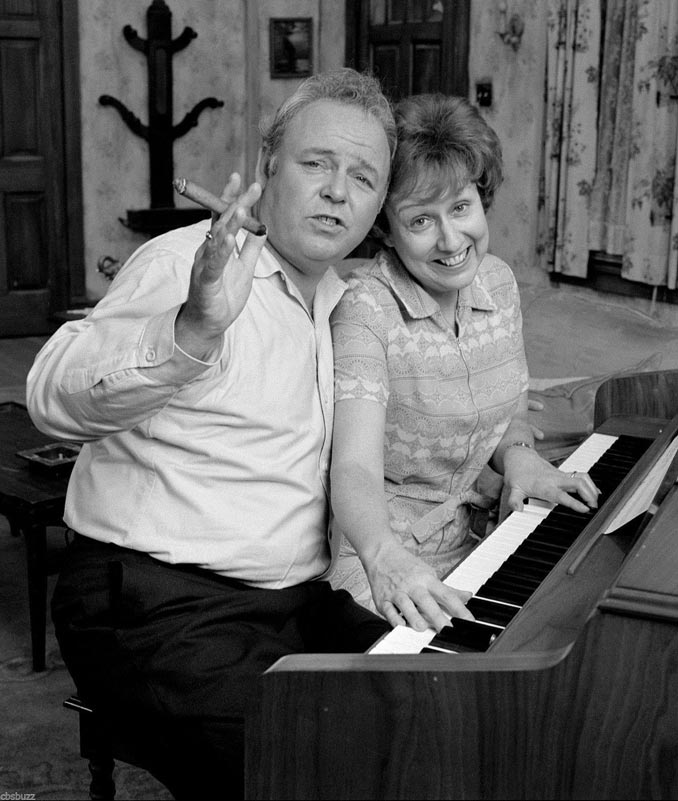
You may be familiar with All in the Family’s closing theme song, but did you know Carroll O’Connor wrote lyrics to accompany it? He was inspired by the Roger Kellaway song, "Remembering You", and added sentimental lyrics to it to commemorate his time as Archie Bunker.
The closing theme featured at the end would play over the footage of the row of houses in Queens. While Caroll O'Connor had wrote lyrics for the instrumental song, only the instrumental was played. The song in full was featured on a record.
Producers Expected an Abundance of Backlash

Prior to airing the first episode of All in the Family, CBS network hired additional phone operators to take calls. They expected backlash and complaints about the sitcom’s controversial subject matter—but the calls never came. Producers were surprised by how well the show was received.
Carroll O’Connor Had Unrealistic Contract Demands

In 1974, Carroll O’Connor went on a strike of sorts. He disappeared from episodes during All in the Family’s fifth season, making many viewers question his absence. It was revealed that his disappearance had to do with contract demands. His salary feud with Norman Lear made headlines—O’Connor sued the production company for $64,000 dollars and demanded 12 weeks of vacation (out of a 24-week contract).
Contract disputes with Carrol O'Connor came up in the show's fifth season and while not all his demands were met, he did end up getting a raise. He, of course, had a new contract for Archie Bunker's place and was angered when the show was canceled after its fourth season.
All in the Family Featured TV’s First Ever Full-Frontal

This sitcom shocked viewers in 1976. Gloria, daughter of Archie and Edith, and Michael, husband of Gloria, had just given birth to a baby boy—Joey Stivic. Producers decided to defy the rules of TV and filmed a full-frontal male shot of little Joey. This had people talking for weeks!
Of course, it was just a baby and not a fully grown human, so it's not quite like what you might see on HBO all the time. Nevertheless, at the time it had people talking, who apparently never saw a naked baby in their entire lives.
Producers Worried About the Sitcom’s Controversial Conversations

Many argue that All in the Family’s success stemmed from controversial conversations. The writers of this sitcom weren’t afraid to tackle topics that were considered taboo or previously unsuitable. Issues about race, sexuality, women’s liberation, sexual assault, religion, terminating pregnancy, and menopause were discussed in ways that were respectful, yet comical.
These controversial subjects no doubt were a huge basis for the appeal of the show. Often the most memorable moments of sitcoms are the moments you don't expect, particularly when you are used to the same situations occurring over and over again.
Rob Reiner Had a Receding Hairline

Let’s be honest, hair loss sucks. Rob Reiner can relate. During the first season of All in the Family, he started losing hair—and fast. Writers and producers didn’t love the idea of Michael Stivic having a receding hairline, so they bought him a hairpiece. Most viewers didn’t even notice it!
Of course, the real-life Reiner is not worried at all about his hairline and it hasn't affected his ability to get jobs. Perhaps, the creators of the show were just a little too hung up about hairlines. Buts it's difficult to say how different audiences would have reacted if Michael Stivic didn't have as much hair.
Americans Unexpectedly Embraced Archie Bunker
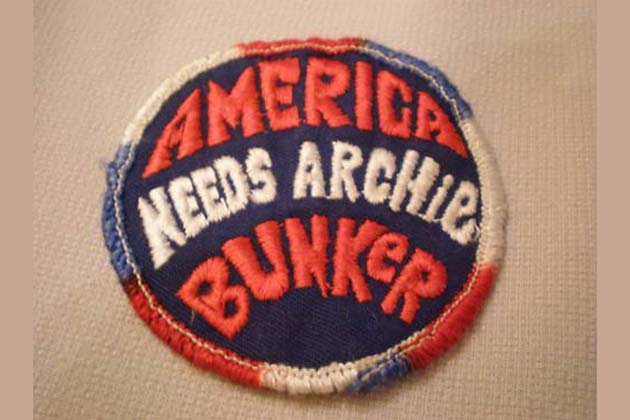
No one expected Archie Bunker to be so well-liked. Despite his inability to adapt to a changing world, fans loved him. They embraced his outspokenness and supported his dad-like humor. They even began toting “Archie Bunker for President” stickers and buttons.
Of course, many of those people may have been missing the point. Archie Bunker is not a perfect human being by any stretch of the imagination. His bigoted personality was more of a source of ignorance that needed to be corrected rather than a set of conservative ideals.
O’Connor and Stapleton Had to Rerecord the Theme Song

The beloved All in the Family theme song continues to create nostalgia. But when it was initially recorded, it was very difficult to understand. The words were muddled and viewers constantly called and asked what the lyrics were. The line “Gee, our old LaSalle ran great” was incomprehensible. Eventually, O’Connor and Stapleton re-recorded the song and made sure to enunciate.
Of course, as mentioned earlier, Stapleton could sing well in real life and had to sing poorly for the sake of the character. Getting the right level of off-key was vital to being understood while still going for the tone they were looking for.
The Theme Song Wasn’t Intended for O’Connor and Stapleton

Although we’ve all grown to love O’Connor and Stapleton’s rendition of “Those Were the Days,” they weren’t originally supposed to sing the sitcom’s theme song. Writers and producers planned to have an orchestra record the song, but due to budgetary concerns, they decided it would be more sentimental for Archie and Edith to sing it with the accompany of a piano.
Of course, the theme song as sung on the show is a whole lot more memorable as it is. An orchestra could have easily made the song less memorable and wouldn't have gone with the tone of the show. Sometimes a theme song can really make or break a show too. When you hear the theme, you should instantly recognize the show or the theme really is no good.
Writers Threatened Carroll O’Connor

O’Connor wasn’t always the easiest actor to work with. During a financial dispute, writers decided to threaten O’Connor with a replacement. They prepared to kill Archie’s character off and make Archie’s best friend, Stretch Cunningham, the leading man.
Of course, they were probably bluffing. Archie Bunker is the show and they obviously knew that. They even continued the show with his name in the spin-off series. There is no doubt that the show would have quickly ended with anyone else as the main character.
Archie and Edith’s Lounge Chairs are Featured in the Smithsonian

All in the Family made quite the impact on America—but even I could’ve never predicted the popularity of Archie and Edith’s...lounge chairs. The iconic chairs that sat in the Bunker’s living room have been relocated to the Smithsonian in Washington, D.C.
Regardless of how audiences might feel about a show like All in the Family now, the show was an important piece of television history and that's why the chairs are saved. The chairs themselves are nothing fancy. They were actually purchased from a thrift store in Southern California and they were used until the very final episode.
Archie Bunker Wore his Wedding Ring on the Wrong Finger

There’s no denying that Archie Bunker was a quirky character. One of his quirkier traits was wearing his wedding ring on his middle finger. He wore his grandfather’s diamond ring on the middle finger of his right hand and his wedding ring on the middle finger of his left hand. He explained that this “balanced” him out.
With that said, this iconic quirk instantly recalls Archie Bunker if you see anyone else wearing their wedding ring on the middle finger. Of course, it doesn't really matter. just wear the ring on the finger you feel most comfortable.
Archie Bunker Almost Had an Implausible Affair with Irene Lorenzo

For a brief stint of time, All in the Family writers discussed a storyline regarding Archie and Irene Lorenzo, the Bunker’s next-door neighbor. They toyed with the idea of the two having an affair—but realized this seemed too implausible. Honestly, I’m so glad. Archie being an unfaithful husband would’ve been upsetting.
While it certainly would have made for some controversial television, it would have been out of character for Archie who loves his wife more than anything and he loved her until the very last episode.
Jean Stapleton Declined the Role of Mrs. Teavee

During the casting of the 1971 film Willy Wonka and the Chocolate Factory, Jean Stapleton was asked to play Mrs. Teavee—mother of Mike Teavee. Although this was a once-in-a-lifetime opportunity, Stapleton declined. She was content with the role of Edith Bunker and wanted to continue with All in the Family.
The role of Mrs. Teavee went to Nora Denney but of course, it didn't matter. Jean Stapleton really didn't miss out much. Gene Wilder ultimately steals the show in that film and is the most memorable part of it. Stapleton's role in All in the Family is classic.
Norman Lear Offered to Pay for Fewer Commercial Breaks
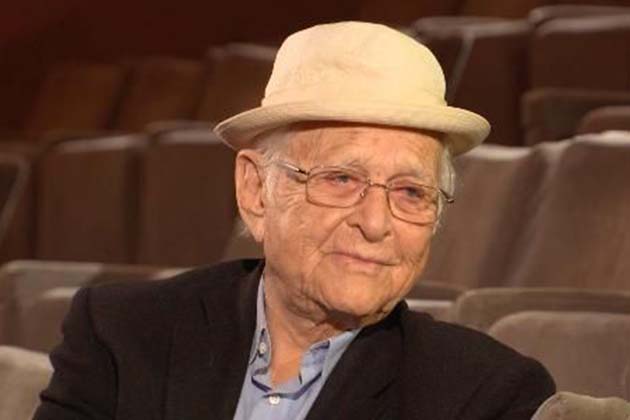
As advertising became more prominent in the ‘70s, commercial breaks grew longer and TV shows grew shorter. Norman Lear was extremely upset when CBS decided to cut three minutes off of his All in the Family episodes. He offered to pay the difference in order to save those three precious minutes, but was turned down. Welcome to America—the land of solicitation!
Of course, now we can all enjoy commercial-free programming with streaming services like Netflix and Hulu - provided you pay the extra cost. Nevertheless, nobody really wants to watch commercials and if you have a DVR with your cable, you can just skip over them.
Rob Reiner Inspired the Memorable Sock and Shoe Debate

I will never forget the infamous All in the Family “sock and shoe” debate. Rob Reiner’s character, Mike Stivic, put a sock and shoe on one foot before putting a sock and shoe on the other foot. Rob Reiner actually did this in real life, which is why it was included in an episode.
Whether you opt for the sock-shoe-sock-shoe approach or the sock-sock-shoe-shoe approach, this still remains to be one of the sitcom’s most memorable arguments. It's a classic television moment that fans of the show still love.
All in the Family Had the First Live Studio Audience

All in the Family wasn’t afraid of being experimental. They addressed sensitive issues, tackled disputable discussions, and produced innovative characters. So, it was no surprise when they became the first U.S. TV series to film in front of a live studio audience!
Previously the shows were shot first and the laughter added afterward. This meant the creators could control what "people" were "laughing" at since the canned laughter could be added to the funny moments. But with All in the Family, the laughter was a little more real.
All in the Family Was Inspired by Till Death Us Do Part
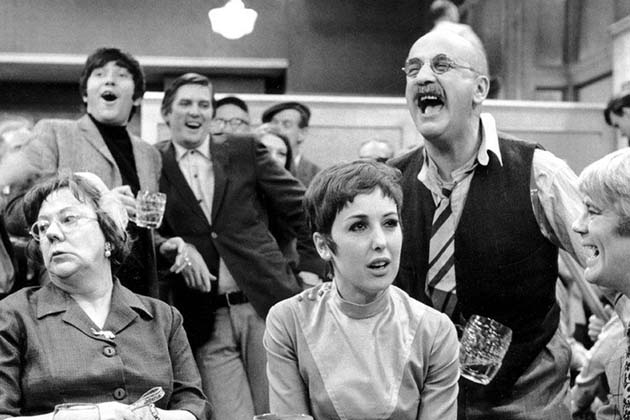
Although Norman Lear argued that he originated All in the Family, he had help from the British TV sitcom Till Death Us Do Part. This BBC production aired in 1965 and ran until 1975. Creator Johnny Speight wrote about a patriarchal figure who held racist and prejudice views and his family.
Sound familiar? Lear managed to put his on twist on his version, but the storyline was largely inspired by this series. The British series ran from 1965 to 1975 but there were only 54 episodes that actually aired, so while it ran longer, All in the Family had more episodes.
The Sitcom Included a Cautionary Warning

Before airing the third and final pilot episode, producers placed a disclaimer at the beginning of the sitcom’s introduction that read, “The program you are about to see is All in the Family. It seeks to throw a humorous spotlight on our frailties, prejudices, and concerns. By making them a source of laughter, we hope to show—in a mature fashion—just how absurd they are.”
This cautionary warning suggested that controversial conversations and subject matter should be taken lightheartedly. That's not to say that the subjects themselves are not to be taken seriously but that the show is a satire of racial tensions in the country.
The Sitcom Was Reformatted After the Ninth Season
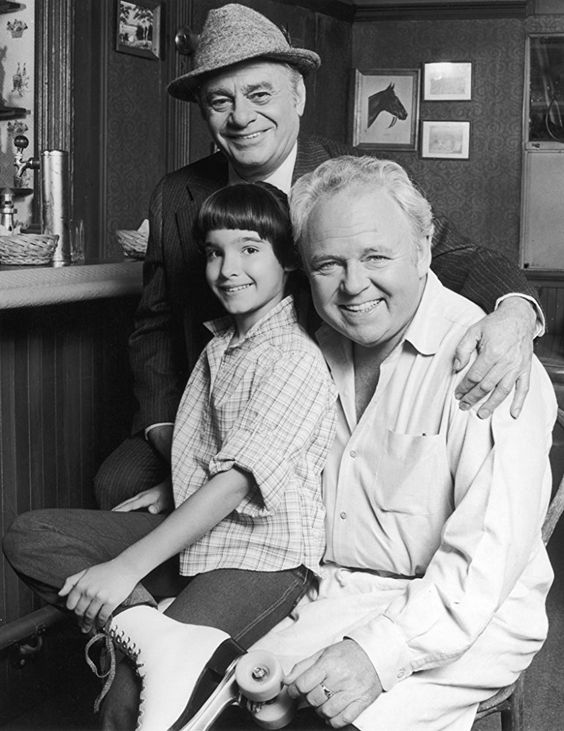
After nine seasons of All in the Family, the show was reformatted. The original series ended and Archie Bunker’s Place was produced as a continuation of the iconic sitcom. It aired in 1979 and ran until 1983. It was no longer filmed in front of a live audience, but it still received lots of attention and laughs.
Archie Bunker's Place focused on Archie Bunker, now that Edith Bunker died off-camera. The show did fairly well but was not as successful. It only lasted for four seasons before its producers decided to cancel the show.
 Author
Samantha Kordsmeier
Last Updated: August 23, 2024
Author
Samantha Kordsmeier
Last Updated: August 23, 2024